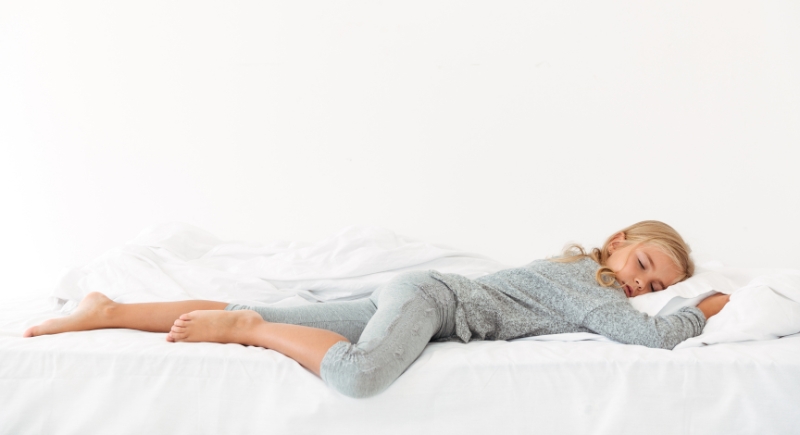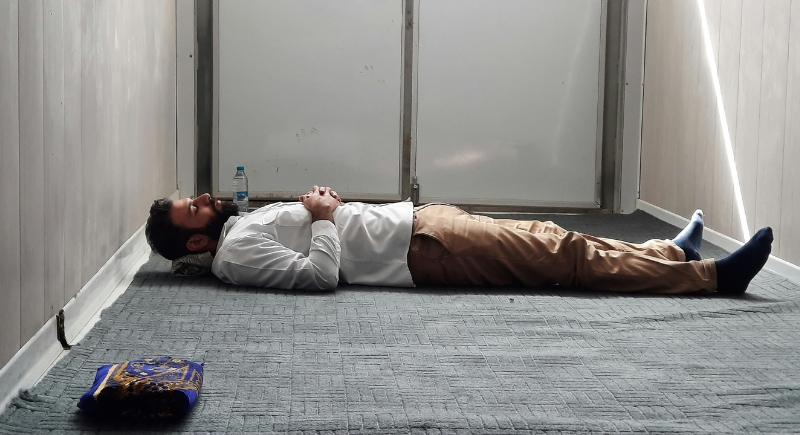Sleep Well? This Position Might Be Sabotaging You
Your body can handle a lot, including cheap office chairs, traffic stress, and lukewarm takeout. But mess with how it rests at night, and it starts plotting its revenge with morning aches, foggy thoughts, and a back that creaks like a rusted gate. Interestingly, the culprit might be something you’ve never questioned: the position in which you actually sleep.
Everyone’s got a go-to sleep position, and while it seems like a harmless habit, that’s not always the case. Some mess with your body, and one popular pose stands out for all the wrong reasons. It’s cozy and familiar, but your spine, hips, and muscles aren’t loving it.
The One-Leg-Up Stomach Tuck

Image via FreePik/drobotdean
Doctors and sleep researchers know this sleep position all too well. You’re face down, one leg pulled up like you’re about to sprint, arms somewhere looking flayed in surrender.
According to general practitioner Dr. Tim Mercer, this position distorts spinal alignment and shifts your pelvis into an awkward tilt. Bending the leg forces your hips to rise unevenly, and your back takes the hit. Over time, that can create stiffness in your lower spine and hips.
It comes as a slow build of tension that’s hard to pin down. It’s common in people who spend their nights unknowingly shaping themselves like a half-wrapped croissant. Thankfully, studies show that less than 8% of people choose stomach sleeping regularly. Those who do tend to develop discomfort if it becomes their default.
There’s also the neck to think about. Sleeping on your stomach means your head turns to the side for hours. That locks your cervical spine in a twisted position. It’s quite similar to keeping your head tilted for an entire movie and wondering why your shoulder is sore.
Breathing is not convenient in this position, either. Your weight compresses your chest and thus reduces how much your lungs expand. For those with existing respiratory issues or low oxygen intake during sleep, it can make nights more restless and less restorative. The more you twist and compress, the more your body works against itself while asleep.
Circulation matters too. If your leg stays bent in that “runner’s lunge” all night, blood flow to your feet slows. That’s why some people wake up with tingling legs or that familiar pins-and-needles static buzz.
Sleep specialists have even flagged stomach sleeping as risky for those managing acid reflux or heartburn. Pressure across the abdomen pushes acid upward when you’re lying flat. The longer you stay like that, the more irritation builds.
Why It Happens and Breaking the Habit

Image via Unsplash/Aziz Ansari
Some people adopt this half-stomach pose because it feels stable. One bent leg acts like an anchor. If you share a bed, you might use it unconsciously to balance out your body when your partner shifts beside you. It can also create space between your limbs, which some find more breathable during warm nights.
Most experts agree that sleeping on your side is the best option. On the right mattress, this position supports natural spinal curves, reduces airway restriction, and makes it easier to avoid pressure on joints. If you sleep on your side, placing a pillow between your knees can align your hips better and reduce morning tightness.
Back sleeping isn’t for everyone, but it has strong benefits when done properly. It keeps the spine aligned, reduces facial compression, and spreads weight more evenly across the body. Use a pillow under your knees if you tend to feel pressure in your lower back, and make sure your head pillow doesn’t push your chin forward.
As for left-side sleeping, it’s generally safe, but may not be ideal for people with certain heart conditions. Research suggests that this position can slightly shift the heart’s placement in the chest, which affects circulation or electrical patterns. Right-side sleeping avoids this and may be gentler.
The more consistent your adjustments, the faster your body will adapt. You might still wake up twisted occasionally—everyone does—but cutting down your time in that half-stomach twist will lower the strain on your body. Some sleep trackers can also give feedback if you’re curious about how often you shift during the night.
The Bottom Line

Image via FreePik
Adjusting sleep posture might not solve everything, but it’s one of the easiest things to check when the rest isn’t adding up. If you’re dealing with tight hips, stiff mornings, or that dull ache in your lower back, don’t ignore how you’re positioned while you sleep. Your bed should be where the stress ends, not where it builds.